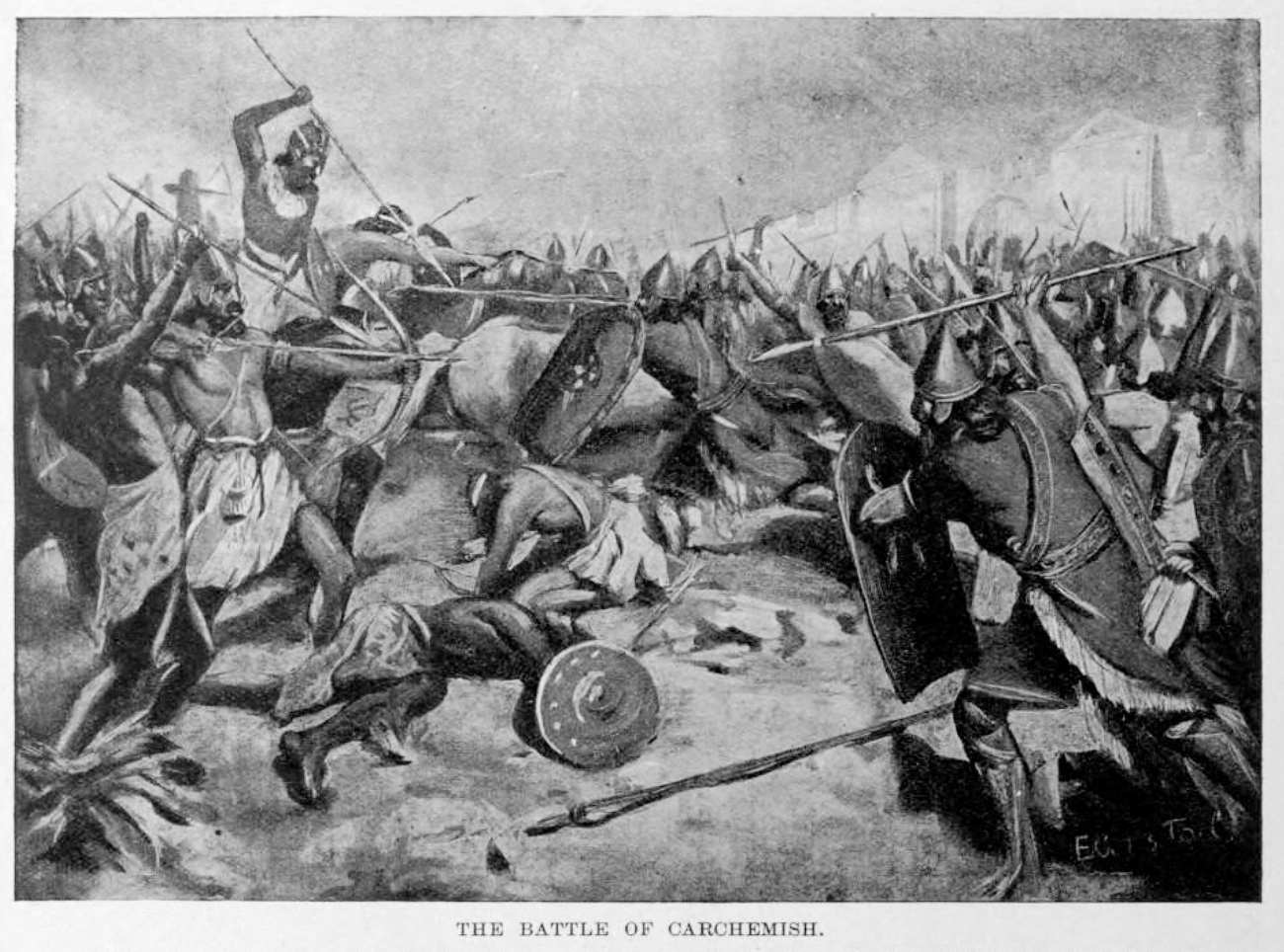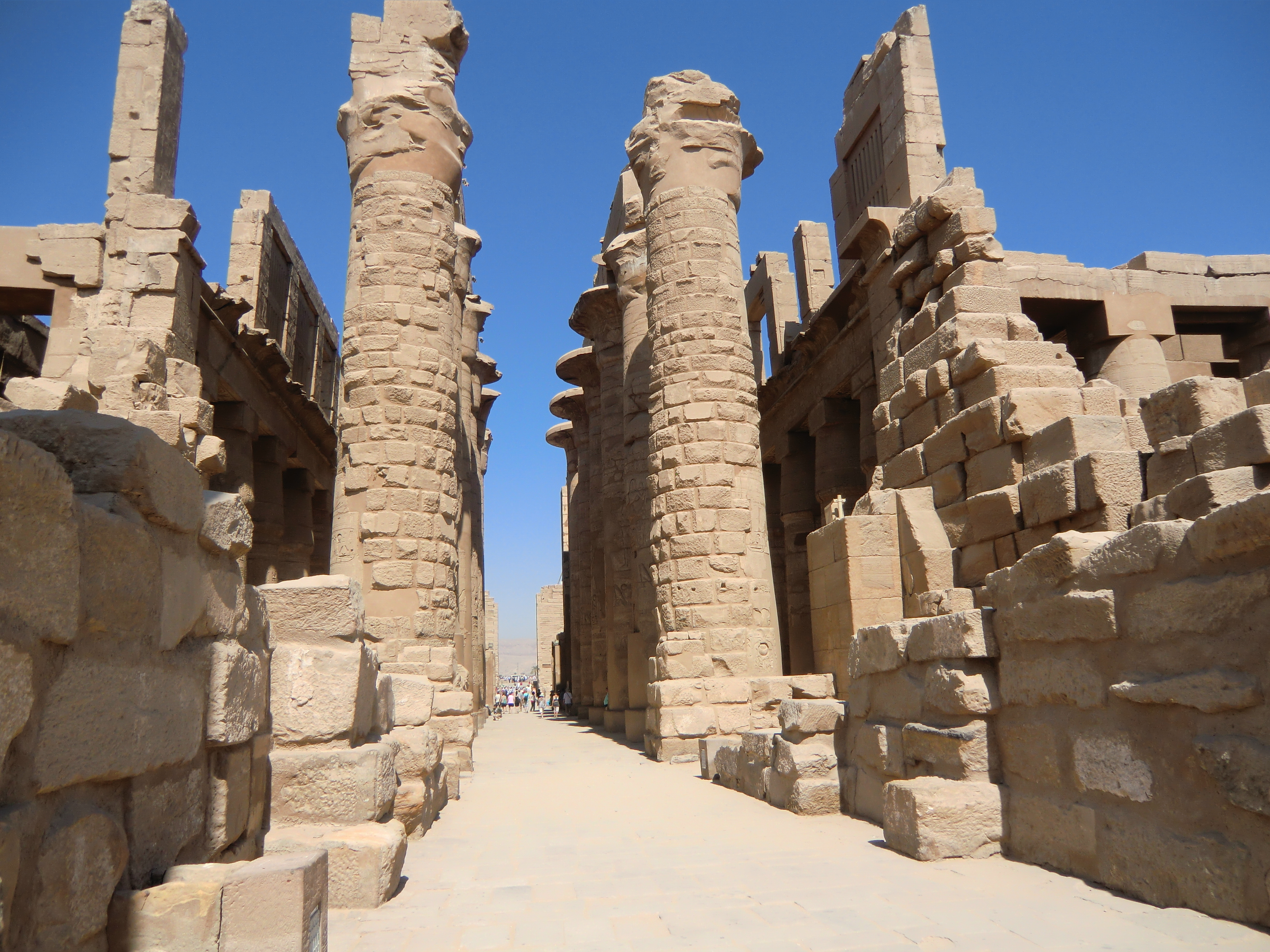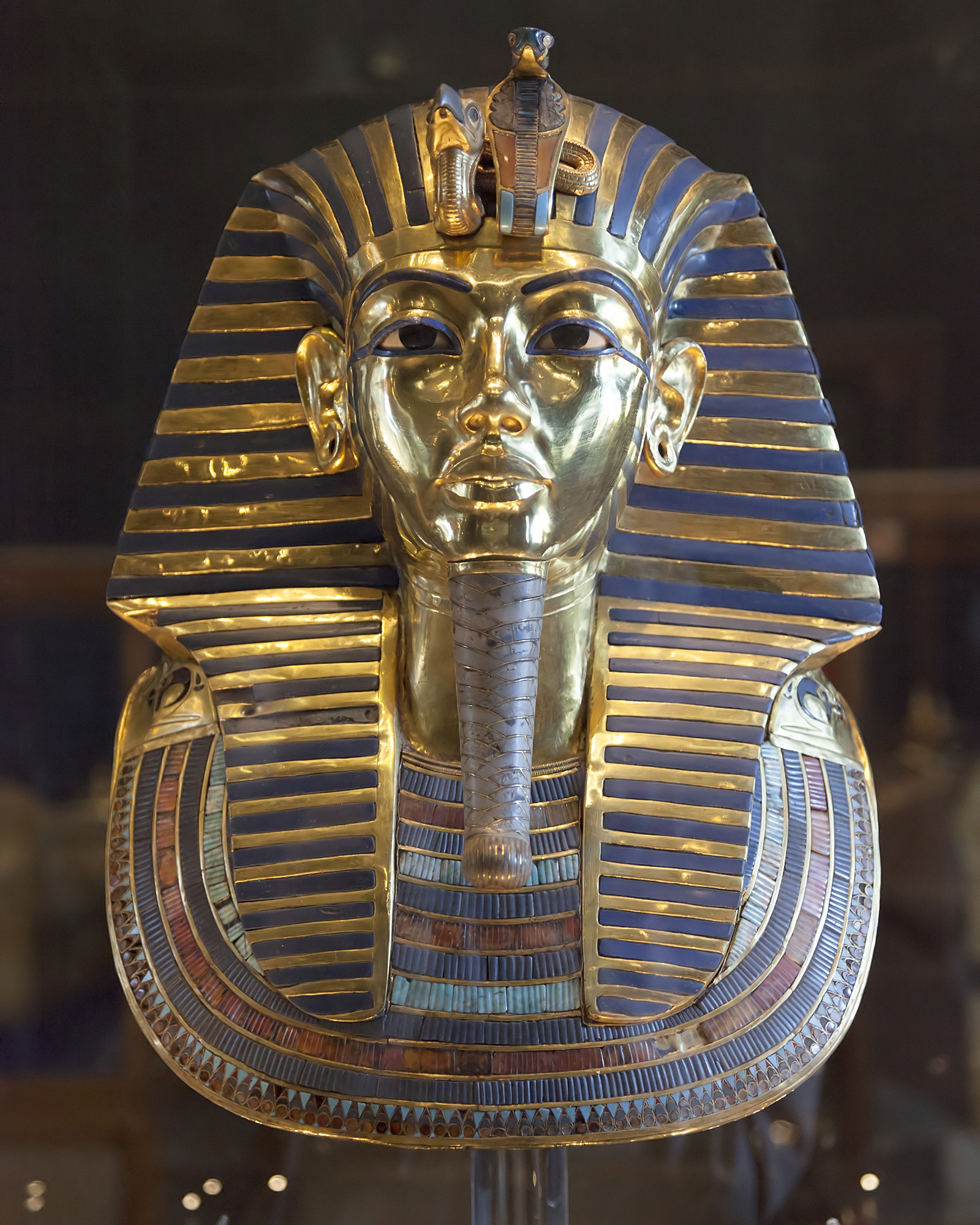|
Psamtik III
Psamtik III (Ancient Egyptian: , pronounced ), known by the Graeco-Romans as Psammetichus or Psammeticus (Ancient Greek: ), or Psammenitus (Ancient Greek: ), was the last Pharaoh of the Twenty-sixth Dynasty of Egypt from 526 BC to 525 BC. Most of what is known about his reign and life was documented by the Greek historian Herodotus in the 5th century BC. Herodotus states that Psamtik had ruled Egypt for only six months before he was confronted by a Persian invasion of his country led by King Cambyses II of Persia.''The New Encyclopædia Britannica: Micropædia'', Vol.9 15th edition, 2003. p.756 Psamtik was subsequently defeated at the Battle of Pelusium, and fled to Memphis where he was captured. The deposed pharaoh was carried off to Susa in chains, and later committed suicide. Family Psamtik III was the son of the pharaoh Amasis II and one of his wives, Queen Tentkheta. He succeeded his father as pharaoh in 526 BC, when Amasis died after a long and prosperous reign of some 44 ... [...More Info...] [...Related Items...] OR: [Wikipedia] [Google] [Baidu] [Amazon] |
Twenty-sixth Dynasty Of Egypt
The Twenty-sixth Dynasty of Egypt (notated Dynasty XXVI, alternatively 26th Dynasty or Dynasty 26) was the last native dynasty of ancient Egypt before the Persian conquest in 525 BC (although other brief periods of rule by Egyptians followed). The dynasty's reign (664–525 BC) is also called the Saite Period after the city of Sais, where its pharaohs had their capital, and marks the beginning of the Late Period of ancient Egypt.Aidan Dodson, Dyan Hilton. ''The Complete Royal Families of Ancient Egypt''. The American University in Cairo Press, London 2004 History This dynasty traced its origins to the Twenty-fourth Dynasty. Psamtik I was probably a descendant of Bakenranef. However, other sources describe him as of Libyan descent. Following the Neo-Assyrian conquest of Egypt during the reigns of Taharqa and Tantamani, and the subsequent collapse of the Napata-based Twenty-fifth Dynasty of Egypt, Psamtik I was recognized as sole king over all of Egypt. Psamtik formed alli ... [...More Info...] [...Related Items...] OR: [Wikipedia] [Google] [Baidu] [Amazon] |
Karnak
The Karnak Temple Complex, commonly known as Karnak (), comprises a vast mix of temples, pylons, chapels, and other buildings near Luxor, Egypt. Construction at the complex began during the reign of Senusret I (reigned 1971–1926 BC) in the Middle Kingdom () and continued into the Ptolemaic Kingdom (305–30 BC), although most of the extant buildings date from the New Kingdom. The area around Karnak was the ancient Egyptian ''Ipet-isut'' ("The Most Selected of Places") and the main place of worship of the 18th Dynastic Theban Triad, with the god Amun as its head. It is part of the monumental city of Thebes, and in 1979 it was added to the UNESCO World Heritage List along with the rest of the city. Karnak gets its name from the nearby, and partly surrounded, modern village of El-Karnak, north of Luxor. Name The original name of the temple was ''Ipet-isut'', meaning "The Most Select of Places". The complex's modern name "Karnak" comes from the nearby village of el-Karnak ... [...More Info...] [...Related Items...] OR: [Wikipedia] [Google] [Baidu] [Amazon] |
Pelusium
Pelusium (Ancient Egyptian: ; /, romanized: , or , romanized: ; ; ; ; ) was an important city in the eastern extremes of Egypt's Nile Delta, to the southeast of the modern Port Said. It became a Roman provincial capital and Metropolitan archbishopric and remained a multiple Catholic titular see and an Eastern Orthodox active archdiocese. Location Pelusium lay between the seaboard and the marshes of the Nile Delta, about two-and-a-half miles from the sea. The port was choked by sand as early as the first century BC, and the coastline has now advanced far beyond its ancient limits that the city, even in the third century AD, was at least four miles from the Mediterranean. The principal product of the neighbouring lands was flax, and the ''linum Pelusiacum'' (Pliny's Natural History xix. 1. s. 3) was both abundant and of a very fine quality. Pelusium was also known for being an early producer of beer, known as the Pelusian drink. Pelusium stood as a border-fortress, a place ... [...More Info...] [...Related Items...] OR: [Wikipedia] [Google] [Baidu] [Amazon] |
Dethroned Monarchs
Ring of Honor (ROH) is an American professional wrestling Professional wrestling promotion, promotion based in Jacksonville, Florida. The promotion was founded by Rob Feinstein on February 23, 2002, and was operated by Cary Silkin from 2004 until 2011; the promotion was subsequently sold to the Sinclair Broadcast Group, and then sold to Tony Khan. Throughout the 2010s, ROH was considered the third largest wrestling promotion in the United States, behind WWE and Total Nonstop Action Wrestling, initially operating on an internet distribution model. Under Sinclair's ownership, ROH began talent-sharing deals with wrestling companies outside the U.S., expanded their television visibility through Sinclair's broadcast stations, and eventually established its own streaming service in 2018 called Honor Club. As Sinclair was struggling with debt in the late 2010s, ROH went on a hiatus at the end of 2021. In March 2022, the promotion was sold to Tony Khan, also the co-owner of All Elite ... [...More Info...] [...Related Items...] OR: [Wikipedia] [Google] [Baidu] [Amazon] |
520s BC Deaths
5 (five) is a number, numeral and digit. It is the natural number, and cardinal number, following 4 and preceding 6, and is a prime number. Humans, and many other animals, have 5 digits on their limbs. Mathematics 5 is a Fermat prime, a Mersenne prime exponent, as well as a Fibonacci number. 5 is the first congruent number, as well as the length of the hypotenuse of the smallest integer-sided right triangle, making part of the smallest Pythagorean triple ( 3, 4, 5). 5 is the first safe prime and the first good prime. 11 forms the first pair of sexy primes with 5. 5 is the second Fermat prime, of a total of five known Fermat primes. 5 is also the first of three known Wilson primes (5, 13, 563). Geometry A shape with five sides is called a pentagon. The pentagon is the first regular polygon that does not tile the plane with copies of itself. It is the largest face any of the five regular three-dimensional regular Platonic solid can have. A conic ... [...More Info...] [...Related Items...] OR: [Wikipedia] [Google] [Baidu] [Amazon] |
Year Of Birth Unknown
A year is a unit of time based on how long it takes the Earth to orbit the Sun. In scientific use, the tropical year (approximately 365 solar days, 5 hours, 48 minutes, 45 seconds) and the sidereal year (about 20 minutes longer) are more exact. The modern calendar year, as reckoned according to the Gregorian calendar, approximates the tropical year by using a system of leap years. The term 'year' is also used to indicate other periods of roughly similar duration, such as the lunar year (a roughly 354-day cycle of twelve of the Moon's phasessee lunar calendar), as well as periods loosely associated with the calendar or astronomical year, such as the seasonal year, the fiscal year, the academic year, etc. Due to the Earth's axial tilt, the course of a year sees the passing of the seasons, marked by changes in weather, the hours of daylight, and, consequently, vegetation and soil fertility. In temperate and subpolar regions around the planet, four seasons ar ... [...More Info...] [...Related Items...] OR: [Wikipedia] [Google] [Baidu] [Amazon] |
Pharaohs Of The Twenty-sixth Dynasty Of Egypt
Pharaoh (, ; Egyptian: '' pr ꜥꜣ''; Meroitic: 𐦲𐦤𐦧, ; Biblical Hebrew: ''Parʿō'') was the title of the monarch of ancient Egypt from the First Dynasty () until the annexation of Egypt by the Roman Republic in 30 BCE. However, the equivalent Egyptian word for "king" was the term used most frequently by the ancient Egyptians for their monarchs, regardless of gender, through the middle of the Eighteenth Dynasty during the New Kingdom. The earliest confirmed instances of "pharaoh" used contemporaneously for a ruler were a letter to Akhenaten (reigned –1336 BCE) or an inscription possibly referring to Thutmose III (–1425 BCE). In the early dynasties, ancient Egyptian kings had as many as three titles: the Horus, the Sedge and Bee ( ''nswt-bjtj''), and the Two Ladies or Nebty ( ''nbtj'') name. The Golden Horus and the nomen titles were added later. In Egyptian society, religion was central to everyday life. One of the roles of the king was as an intermediary ... [...More Info...] [...Related Items...] OR: [Wikipedia] [Google] [Baidu] [Amazon] |
6th-century BC Pharaohs
The 6th century is the period from 501 through 600 in line with the Julian calendar. In the West, the century marks the end of Classical Antiquity and the beginning of the Middle Ages. The collapse of the Western Roman Empire late in the previous century left Europe fractured into many small Germanic kingdoms competing fiercely for land and wealth. From the upheaval the Franks rose to prominence and carved out a sizeable domain covering much of modern France and Germany. Meanwhile, the surviving Eastern Roman Empire began to expand under Emperor Justinian, who recaptured North Africa from the Vandals and attempted fully to recover Italy as well, in the hope of reinstating Roman control over the lands once ruled by the Western Roman Empire. Owing in part to the collapse of the Roman Empire along with its literature and civilization, the sixth century is generally considered to be the least known about in the Dark Ages. In its second golden age, the Sassanid Empire reached the ... [...More Info...] [...Related Items...] OR: [Wikipedia] [Google] [Baidu] [Amazon] |
Histories (Herodotus)
The ''Histories'' (, ''Historíai''; also known as ''The History'') of Herodotus is considered the founding work of history in Western literature. Although not a fully impartial record, it remains one of the West's most important sources regarding these affairs. Moreover, it established the genre and study of history in the Western world (despite the existence of historical records and chronicles beforehand). ''The'' ''Histories'' also stands as one of the earliest accounts of the rise of the Achaemenid Empire, Persian Empire, as well as the events and causes of the Greco-Persian Wars between the Persian Empire and the Polis, Greek city-states in the 5th century BC. Herodotus portrays the conflict as one between the forces of slavery (the Persians) on the one hand, and freedom (the Athenians and the confederacy of Greek city-states which united against the invaders) on the other. ''The Histories'' was at some point divided into the nine scroll, books that appear in modern editions ... [...More Info...] [...Related Items...] OR: [Wikipedia] [Google] [Baidu] [Amazon] |
Cambyses And Psammetichus , a historic region
{{disambig, hn ...
Cambyses may refer to: * Cambyses I, King of Anshan 600 to 559 BCE * Cambyses II, King of Persia 530 to 522 BCE * Cambyses, ancient name of the Iori river in the South Caucasus * '' Cambyses Romance'', a prose narrative * ''Cambyses'', a tragedy (published 1569) by Thomas Preston * '' Cambyses, King of Persia'', a 1671 play * ''Qambeez'' (''Cambyses''), a tragedy in Arabic by Ahmed Shawqi * Kambyses, protagonist in Felix Salten’s novel '' The Hound of Florence'' See also * Kamboja (other) * Cambysene Cambysene was a region first attested in the ''Geographica'' ("Geography") of the ancient geographer and historian Strabo (64/3 BC – AD). According to Strabo, it comprised one of the northernmost provinces of the ancient Kingdom of Armenia, and ... [...More Info...] [...Related Items...] OR: [Wikipedia] [Google] [Baidu] [Amazon] |









